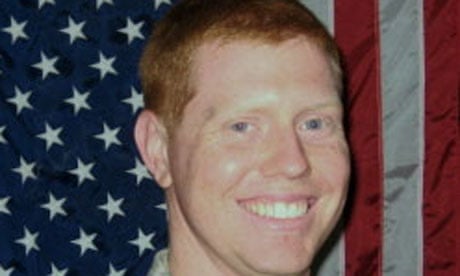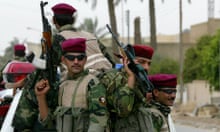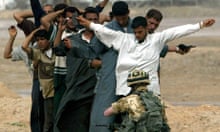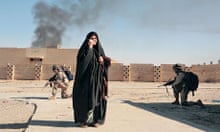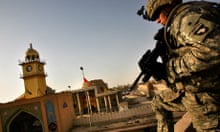US troops killed at least seven and wounded 34 of their compatriots in 18 suspected friendly fire incidents after the invasion of Iraq, only the most serious of which have previously been made public, the war logs reveal.
The catalogue of "blue on blue" deaths and injuries shows how serious the wrong call from a young man in charge of deadly weaponry can be in the stress, confusion and bureaucracy of modern war – and how events that seem clear one moment may be perceived differently soon afterwards.
When a unit from the 502nd Infantry Regiment came under small arms fire in Baghdad on 4 November 2005 they assumed they were being attacked by the enemy. Five men were injured and another, Staff Sergeant Joseph Fegler, 24, was killed. Two hours after the engagement it emerged that the damage had been done by the rear gunner of another US convoy up ahead. The first shots the victims heard had been warning shots fired to get them to keep their distance.
Three weeks later a patrol from another company of the same regiment, moving on foot through farmland south-west of Baghdad, came under heavy fire from insurgents. Some of the platoon were wounded and the senior sergeant commandeered a civilian car to take them back to the company vehicles. As it raced back another part of their company, drawn by the sound of shooting, headed their way. They saw a civilian car filled with armed men moving towards them at high speed, and opened fire, killing two of their comrades, Sergeant Aram Bass and Sergeant William Meeuwsen, and injuring four others, including a civilian interpreter.
When the dead were named the Pentagon said the circumstances were being investigated as possible friendly fire incidents. There was less clarity in the case of Sergeant David Hart, Private Ivan Merlo and Private Phillip Pannier of the 327th Infantry Regiment, who died in January 2008, south-west of Samarra. It was merely stated that "the incident is under investigation", although families do appear to have been told that friendly fire was suspected.
The war logs describe a day that began promisingly as a company of the 327th searched buildings. They found bomb shops: nearly a tonne of high explosives, bomb-making guides, an IED ready to be triggered and a disassembled suicide vest. A smouldering fire suggested the bomb makers weren't far away. A helicopter with the call sign Carnage 3 alerted the company to some camouflaged vehicles nearby. A squad of soldiers sent to investigate found more explosives and a mortar.
Guided by the helicopter to a nearby field of reeds, the squad came across a group of insurgents dug into trenches and tunnels and a firefight broke out. Three American soldiers were wounded, including, it appears, Hart, who died of his injuries later. The war log reports that Carnage 3 fired nine rockets and 250 rounds from a heavy calibre machine gun at the Iraqi position; a few minutes later the American casualties were airlifted away.
As the log entries continue it emerges that events were not so straightforward. Two of the squad's soldiers, Merlo and Pannier, were missing. Another helicopter, Carnage 16, spotted their bodies and their comrades found them on the ground soon afterwards, alongside the bodies of three dead Iraqis. But who killed them?
The log switches to the testimony of the helicopter unit. The log isn't explicit but it is clear the helicopter crews are defending themselves against an accusation that their weapons killed their comrades. The crews didn't see any US soldiers in the area they fired at, they say. Air controllers on the ground were telling them there were no friendly troops in the area, and asking them to shoot at the enemy. In the confusion of battle did they end up shooting two or three of their friends? "The investigation," reports the log, was "ongoing."
Two other US friendly fire fatalities are detailed in the logs: Corporal Ryan Collins of the 501st Parachute Regiment, who died from a gunshot wound; and Private Shawn Hensel, who appears to have been among a group of 23rd Infantry soldiers hit by a burst of heavy calibre machine gun fire from a US Stryker armoured vehicle.
Overtake at your peril
shot at two Royal Marine Land RoversApproaching US convoys was a particularly risky endeavour for the British. On 27 February 2004 three British vehicles overtook a Czech convoy north of Safwan, close to the Kuwait border. That brought them directly behind an American convoy, lumbering along at 30mph, prompting a US soldier to threaten them with his .50 calibre machine gun.
An intelligence report written by the British but passed to the Americans emphasised: "There was sufficient daylight for the US convoy to clearly see the British military number plates on the vehicles." It went on: "The British convoy attempted to get close to and pass the US convoy a total of three times and was threatened in the same way each time."
Five months later, on 20 July, a US convoy opened fire on British vehicles trying to overtake in the same area. British vehicles were also shot at by American convoy escorts again in November and December and by a Bulgarian convoy the same month.
By February 2005 the British seemed to have become resigned to being shot at by their allies as an occupational hazard. A report from that month of a three-vehicle British convoy being strafed by an American gunner concludes "both convoys continued on their journey without stopping".
In May 2005 a gunner on a US convoy opened fire on two Kings Royal Hussars vehicles when one of the Hussars drivers swerved to avoid a piece of debris on the road.
One night in October 2006 a British patrol, festooned with the blue light sticks, agreed on as a sign to identify themselves as friendly, reported they had been shot at by US troops who had no night vision goggles and had been listening to their iPods.
